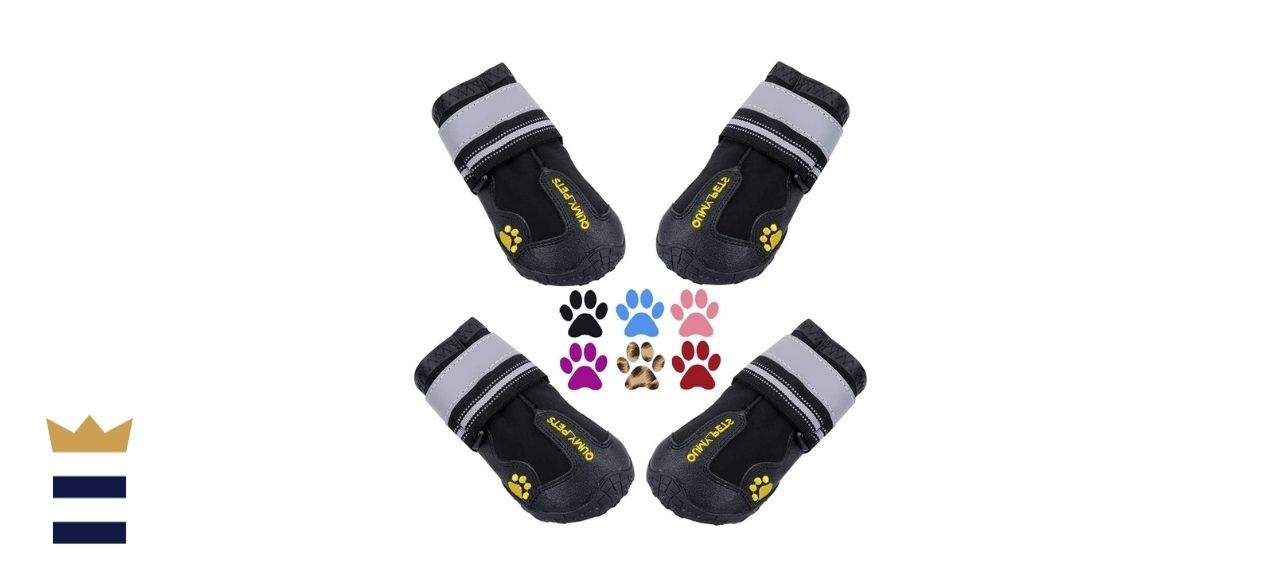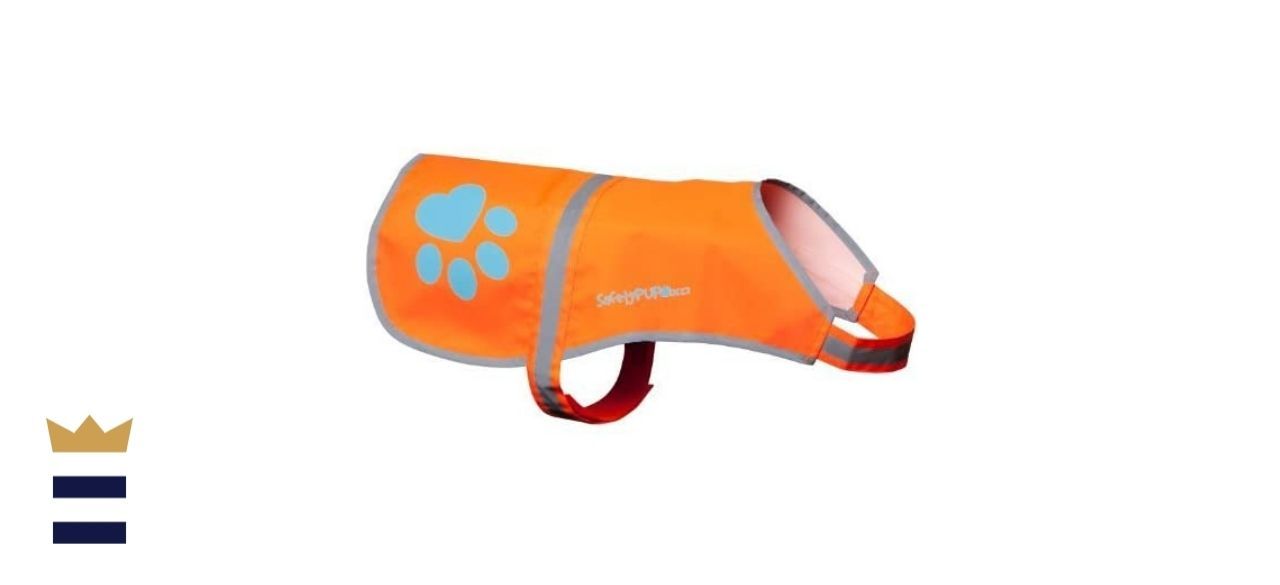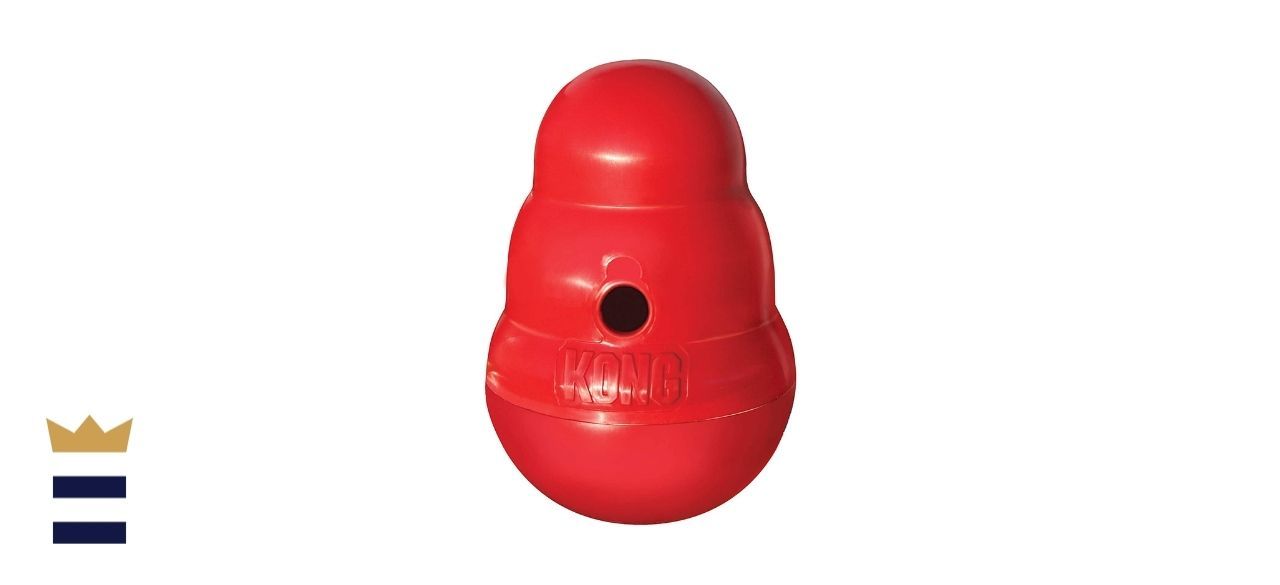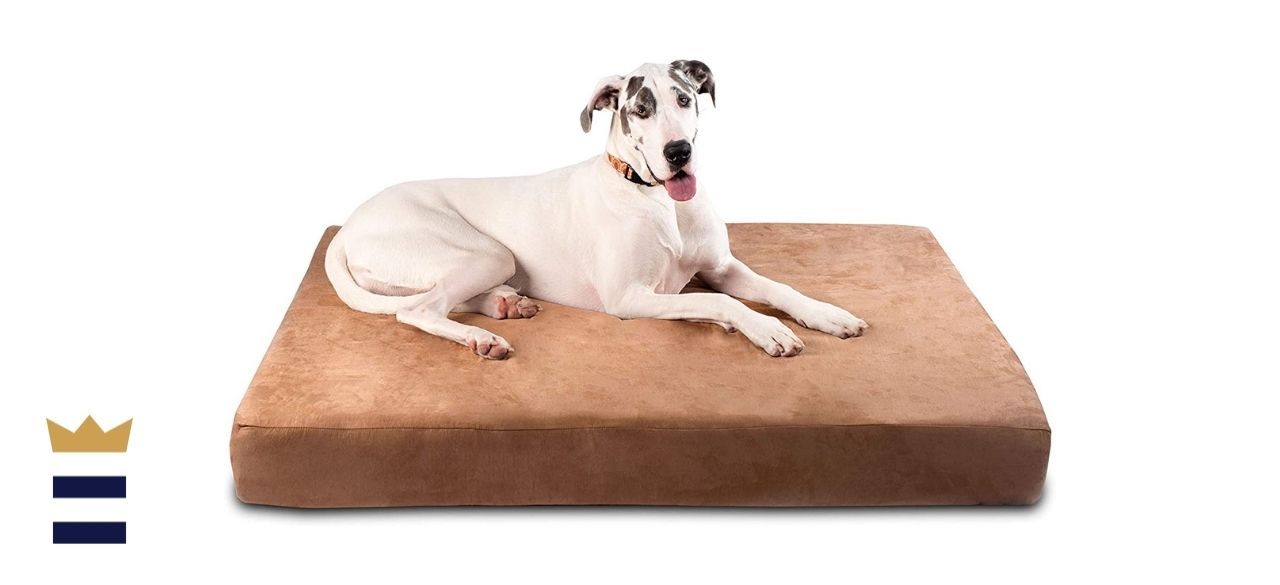How to keep your dog safe and warm this winter

What are the ways to keep your dog safe and warm this winter?
Love it or hate it, winter is coming, and you need to prepare. It’s not just humans who struggle during the colder months. Our pets can have a tough time of it, too, and it’s our duty to care for them properly and minimize any issues.
From getting lost in a snowstorm to developing cracked and irritated paw pads, your dog can suffer from a range of cold weather problems. Luckily, there’s plenty you can do about it. Here’s how to keep your dog safe and warm this winter.
Protect the paws
One of the major winter dangers for dogs that few pet parents know about is the salt or grit used on icy roads. It might help motorists and pedestrians stay safe, but it’s potentially perilous for your pooch. Not only can it irritate the paw pads — causing nasty burns — but it’s also dangerous for your dog to ingest, which can happen easily if he licks his paws after a walk.
A combination of tactics can help keep your canine companion safe. First, try to avoid walking over road grit altogether. If this isn’t possible, bring a towel with you on walks so you can wipe your pet’s paws after walking over a patch of grit and again when you return home. You could also try using booties to protect his paws. These can take some getting used to, but they’ll keep any nasty substances off his paws and keep his feet warm, too.
Take precautions against poison
Be aware of common poisons you might find during the colder months. Antifreeze is toxic to dogs, so keep it where your pooch can’t reach it and clean up any spills right away. Use of rodent poison is more prevalent in winter as mice and rats move indoors to escape the chill, so watch out for it on walks and perhaps ask your neighbors to inform you if they put any down where your four-legged friend could potentially consume it.
Adjust cold weather walks
You may need to slightly change how you walk your dog in the coldest weather. When it’s extremely icy or snowy, the cold can affect your four-legged friend, especially senior dogs, small dogs, and dogs with fine fur. Dog boots and canine coats can help keep Fido warm when out and about. Also, consider taking a few short walks rather than one long trek.
The days are much shorter, so staying visible is important in winter, especially when walking in the early morning or evening. Coats, vests, collars, harnesses, or leashes with reflective strips and flashing collar attachments will all help your four-legged friend be seen. Heavy snow can be disorientating for dogs, so it’s better to keep yours on a leash if walking in these conditions.
Dry off your dog
If your dog gets wet on her walk, it’s important to dry her off thoroughly when you return home to keep her warm. Pay special attention to the paws in icy or snowy weather because ice balls can form in the hair between the pads and lead to painful ice burns. While you can buy dog towels for this purpose, you can just as easily use some old bath towels. Just be sure to wash them regularly to avoid a buildup of bacteria.
Think about indoor activities
You may find days when it’s simply impossible to walk your dog. It’s just not safe to go on walks during blizzards, hail storms, or when there are several feet of snow outside your door. Plus, some dogs refuse to step out of the house if it’s too wet or too cold. In these cases, you might want to find some fun indoor activities to keep your dog entertained. You could work on training, play with your pup’s favorite toys, buy a puzzle toy for your dog to solve, stuff a KONG with something tasty, or hide treats around the house for your pet to find. Keeping your dog’s brain occupied will help avoid boredom when you can’t go outside.
Encourage sweet dreams
It’s not just us humans who can wake up cold in the night without cozy bedding. Your four-legged friend must have a warm place to sleep. It should go without saying, but your dog should sleep in the house during winter (and the rest of the year)! While you can find heated dog beds, that shouldn’t be necessary unless your dog really seems to struggle at night. A standard dog bed should do the trick as long as it’s plush and warm. Memory foam dog beds are especially comfortable. Covering your dog with a blanket will help keep her warm during the night, but if she stirs too much and uncovers herself, she might sleep better in a doggy sweater or indoor coat.
Sign up here to receive the BestReviews weekly newsletter for useful advice on new products and noteworthy deals.
Lauren Corona writes for BestReviews. BestReviews has helped millions of consumers simplify their purchasing decisions, saving them time and money.
BestReviews spends thousands of hours researching, analyzing and testing products to recommend the best picks for most consumers. BestReviews and its newspaper partners may earn a commission if you purchase a product through one of our links.
Copyright 2023 Nexstar Media Inc. All rights reserved. This material may not be published, broadcast, rewritten, or redistributed. Regular the hill posts











